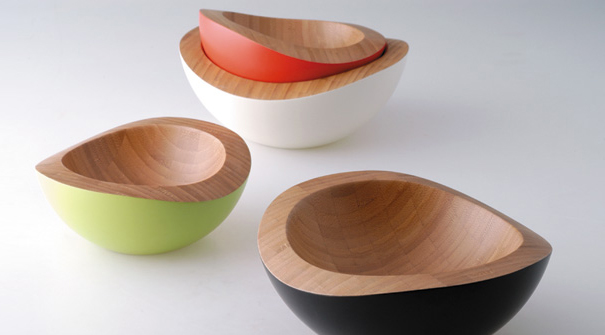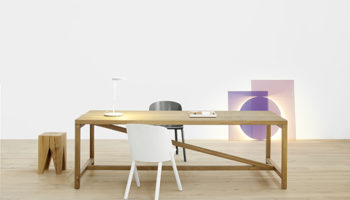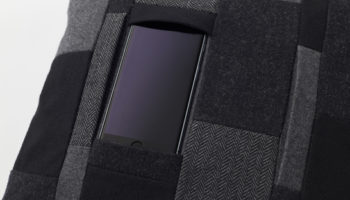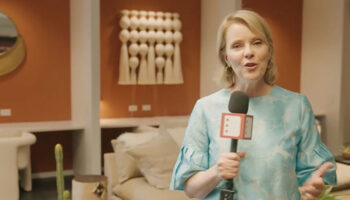Teori Bamboo
If you consider yourself eco-saavy or if you at least have it in the back of your mind that you’d like to “go more green” in your life and in your business, then you’ve certainly heard of the benefits of bamboo.
YAMAYAMA CENTER PIECE. Designed by Yusuke Tsujita. Manufactured by Teori.
Since its ascendance in the world markets about ten years ago (it has been used as a building material in Asia for thousands of years), bamboo has taken over a considerable portion of the hardwood flooring market in the U.S. and Europe. Though technically a grass (and, hence, a sustainable/renewable product, but more on this in a bit…), bamboo shares many qualities with hardwoods that make it a great choice for floors: it’s durable, hard, and stable; it looks like wood-it features the fine texture and grain variance that distinguish it as natural and unique; and it’s versatile in appearance. This last quality might surprise, since one misnomer about bamboo is that its light tone is a limiting factor, but “carbonization”-a process that “cooks” the bamboo under pressure and steam-has opened the door to a great variety in tones and shades.

NUTS. Designed by Yousuke Shimizu. Manufactured by Teori.
But, of course, the biggest draw is the sustainability factor; some varieties, like the Japanese and Taiwanese Moso, mature in five to six years (compare that to maturity time for birch or oak), which means that, given good cultivating practice, bamboo is eminently available. Another great quality of this Asian super-grass is that its manufacture produces healthful by-products. Bamboo charcoal, a Japanese and Chinese folk remedy, is a natural anti-fungal and anti-microbial agent, as well as a natural purifier-proponents claim that it filters pollutants in the water and the air; regulates humidity levels; even acts as a natural electron absorption device, thus protecting us from the harmful emissions of the computer and tv.
But is bamboo for floors alone? Not if you ask designer Hiroyuki Kato of the Japanese design collective Teori. A kind of super-team of six famed designers, Teori aspires to expand the uses of bamboo, and their innovations in the use of bamboo laminate have made this already versatile product even more so. Teori makes furniture that “implements a universal style for people of all shapes and sizes, ranging from toddlers to adults. The underside of our bamboo desktops are coated with bamboo charcoal, resulting in a bamboo/charcoal combination of healthful furniture finished with a natural paint that is friendly to the body.” But what most catches my eye are the accessories. Though it can be shaped into strict and rigid angles, bamboo possesses a natural fluidity that lends it to asynchronous shapes. This feature allows Kato et. al. to create the illusion of movement: thus, salt and pepper shakers that look like they’re perpetually battling a stiff wind; salad bowls in a gyroscopic dance; a cutting board with laminate insets that weave and wend like a lazy river. These beautiful designs confirm that the uses of bamboo are constrained only by the imagination.
See Teori for further info.




Leave a Reply